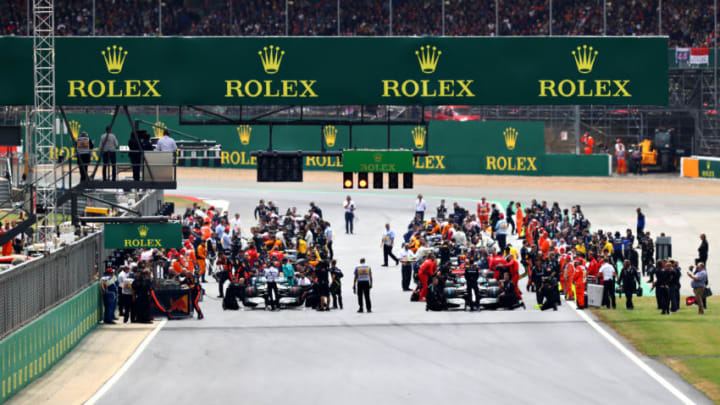Formula 1: Is reverse grid qualifying race a gimmick?

As usual in Formula 1, ideas of how to “bring in a new audience” are tossed in the air for all to see, with most dissipating just as quickly.
The proposal of a 30-minute reverse grid qualifying race on Saturday seems to have lingered in the air for quite some time, while starting to form a cloud. But is this sort of proposal the right way for Formula 1 to go?
First and foremost, qualifying is one of the best parts of a race weekend. Seeing Formula 1 cars at full tilt, with the machines and drivers on their limits of what is possible — there are not many things better to watch. A driver’s grid position on race day should be decided by his fastest lap time in qualifying. That means the driver is rewarded for his efforts. It’s quite simple.
A large reason for people supporting the reverse grid proposal is to apparently level the playing field. It won’t. Let’s say the usual top six cars, the two Mercedes, the two Ferraris and the two Red Bulls, are starting at the back of the grid.
More from Formula One
- Formula 1: Top Red Bull threat identified for 2024
- Formula 1: Why the Max Verstappen retirement obsession?
- Formula 1: Williams ‘mistake’ hints Logan Sargeant’s future
- Formula 1 awaiting key confirmation for 2024 season
- Formula 1: The ‘championship’ Max Verstappen only leads by 3 points
Especially with the current regulations, those top six cars would once again be the top six within a matter of laps.
Of course, there would be plenty of overtaking. However, most overtakes would be the fastest cars getting past others that run a second or more off their pace. And then the same comments of “they are in faster car” would arrive once again. Personally, it would be better viewing to see drivers such as Lewis Hamilton and Max Verstappen produce real racing at the front of the field, rather then their duel being interrupted due to the fact that they have to overtake slower midfield cars. It would produce racing, but artificial racing.
It is a gimmick. Formula 1 should not have gimmicks. It is the pinnacle of motorsport. A proposal like this should be used in another racing category with fewer eyes on it — maybe an electric series. Just saying.
If it is agreed that the three-session qualifying format is a problem, then there are other solutions. For example, bringing back the old faithful one-shot qualifying could work. Not only would the pressure be ramped up even more than it is now, but it would shut down multiple arguments that drivers tend to regularly use.
They couldn’t cry about blocking because they would be the only one on track, so it would be very difficult to get blocked. That’s one excuse out of the way. It would also cause less fuss at tracks such as Monza. The drivers cannot complain about their non-existent slipstream because every other driver would have had the same as they did. It would avoid instances like the disastrous 2019 qualifying session at Monza — a complete shambles.
Thankfully, many of the drivers are against the ideas, mainly the two most successful drivers on the current grid, Lewis Hamilton and Sebastian Vettel. The latter dubbed the idea “bull****” during a press conference in Singapore last year, with Hamilton empathically agreeing with him.
Obviously, every team will have their own arguments. The team leading the championships will be against it because it would damage their chances of securing the bag. A collision with a team which they would normally lap would see them end up in the back of the grid instead of the front.
But turn to the other cheek and the teams which are normally lapped would most likely be for the idea, as it would provide them with a number of things they wouldn’t get during a normal session. Let’s just expand on that last point.
Can you imagine how happy the sponsors would be for the smaller teams if they were to be seen defending the championship leader, maybe even the defending champion, for position? They would love it.
It would provide them with more air time, so the viewers are not staring at the first six cars the whole race, But, given FOM’s quality last year, it wouldn’t be a shock to see the same thing happen.
Another reason is the most obvious. There is a higher chance for more points, and points mean money.
Let’s pull a random midfield team out of a hat…Toro Ros…sorry, AlphaTauri. The championship is not going well for one of their drivers so they begin the qualifying race on the second row. Within the next 30 minutes, luck turns in this driver’s favor, and with incidents galore, he finds himself running in fourth place at the checkered flag.
Fourth place in the main race itself translates to 12 big points, an amount which at times could take a handful of races to obtain. That translates to more money for the team and increases their position in the constructor standings. Plus, it makes the driver in question look better.
But this is Formula 1, so somebody would be unhappy with that outcome. Their rivals would complain about their starting position advantage and it would rumble on for who knows how long.
Top 10 Formula 1 drivers of all-time. dark. Next
Having an extra race provides no solutions for their troubles, only increases them. Nothing would change. Teams would be normal Formula 1 teams and complain about one thing or another, leaving the decision makers of Formula 1 back on square one.